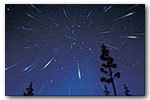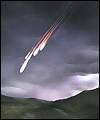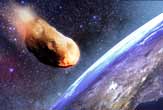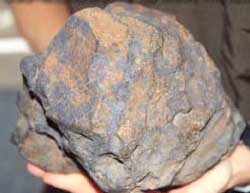 |
Meteoroids: Chunks of Space Debris |
 |
Meteoroids: Chunks of Space Debris |
 |
Shooting Stars
|
|
Our Interplanetary Roulette Game
|
 |
_150x180.gif) |
The Most Destructive Impacts
|
|
On the Ground: Meteorites
|
 |
|
Interesting Questions
|
| * The largest meteorite ever found on Earth weighs more than 66 tons, and was found 20 km west Grootfontein, Namibia, on a farm named Hoba-West. It crashed to earth tens of thousands of years ago. |
![]()
page by luca bombelli <bombelli at olemiss.edu>, modified 29 sep 2012